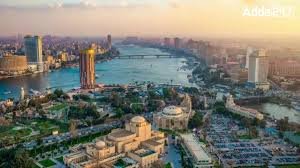The Riskiest City in the World: Understanding Global Safety Challenges
Overview of the Riskiest City
Recent studies have identified Mexico City as the riskiest city in the world, according to a comprehensive analysis that assessed various safety parameters, including crime rates, environmental hazards, and urban infrastructure challenges. This ranking highlights the urgent need for effective governance and community resilience in urban planning, as many residents face daily threats that impact their quality of life. The report emphasizes that urban safety is not solely about crime but also encompasses environmental factors such as pollution, natural disasters, and public health issues.
Crime and Safety Concerns
Mexico City has consistently grappled with high levels of crime, including violent offenses and organized crime syndicates. The city’s residents live under constant fear of theft, kidnapping, and assault, making it essential for authorities to implement robust policing strategies. However, despite these efforts, the rising crime rates have instilled a sense of insecurity among citizens, further complicating efforts to foster economic development and tourism.
Environmental Challenges
Beyond crime, the city faces significant environmental challenges, including air pollution and waste management issues. Mexico City is notorious for its poor air quality, attributed to vehicular emissions and industrial activity. Furthermore, the geographical location of the city makes it susceptible to earthquakes, raising concerns about infrastructure resilience. This combination of factors contributes to the overall risk profile of the city, making it imperative for urban planners to integrate sustainable practices into their development strategies.
Social Implications
The implications of being labeled as the riskiest city extend beyond immediate safety concerns. It affects economic opportunities, public health, and overall well-being. Residents are often hesitant to engage in social activities or invest in local businesses, which can stifle community growth. Moreover, the stigma associated with the city’s risk status may deter tourists and foreign investment, further exacerbating economic challenges.

Why This News is Important
Understanding Urban Safety Dynamics
This news is crucial for students preparing for government exams, especially those focusing on urban planning, public administration, and law enforcement. It provides insights into the multifaceted nature of urban safety, emphasizing that effective governance must address both crime prevention and environmental sustainability.
Implications for Policy Makers
The findings serve as a wake-up call for policymakers to prioritize safety measures and community engagement in their strategies. Understanding the complexities surrounding urban risk is vital for developing comprehensive policies that ensure the safety and well-being of citizens.
Global Context
In a globalized world, cities are interconnected, and issues like crime and environmental hazards transcend borders. This news illustrates the need for international collaboration in addressing urban safety challenges, making it relevant for civil service aspirants focused on international relations and urban development.
Enhancing Awareness Among Citizens
Raising awareness about the risks associated with urban living empowers citizens to advocate for better governance and safety measures. By understanding the challenges their cities face, individuals can contribute to community resilience and support initiatives aimed at improving public safety.
Preparing for Future Challenges
The analysis of Mexico City as the riskiest city serves as a case study for students and future leaders. It highlights the importance of proactive measures in disaster preparedness, urban planning, and crime prevention, essential skills for those entering public service.
Historical Context: Background on Urban Safety in Mexico City
Mexico City has a long history of social and political upheaval, which has significantly influenced its safety dynamics. The city’s rapid urbanization in the 20th century led to the expansion of informal settlements, exacerbating socio-economic disparities and increasing vulnerability to crime and disasters. Historical events, such as the devastating 1985 earthquake, revealed the inadequacies in the city’s infrastructure and response systems, prompting efforts for reform and resilience building.
Over the years, attempts to improve safety have faced challenges from corruption and inadequate funding, leading to a persistent cycle of violence and insecurity. The rise of drug cartels and organized crime in the late 20th century further complicated the situation, creating a landscape where violence became normalized. Understanding this historical context is essential for comprehending the current safety challenges facing Mexico City.
Key Takeaways from “The Riskiest City in the World”
| Serial No. | Key Takeaway |
|---|---|
| 1 | Mexico City is ranked as the riskiest city globally. |
| 2 | High crime rates and environmental hazards contribute to its risk status. |
| 3 | Urban safety encompasses crime, pollution, and natural disaster preparedness. |
| 4 | The city’s risk status impacts economic opportunities and public health. |
| 5 | Understanding urban safety is crucial for effective governance and policy-making. |
Important FAQs for Students from this News
1. What factors contribute to Mexico City’s ranking as the riskiest city?
Mexico City’s ranking stems from high crime rates, environmental hazards such as air pollution, and susceptibility to natural disasters like earthquakes. These factors collectively create significant safety challenges for residents.
2. How does urban safety impact economic opportunities?
High levels of crime and safety concerns can deter tourism and foreign investment, limiting economic growth. Additionally, residents may be less inclined to engage in local businesses, further stifling economic opportunities.
3. What can policymakers do to improve urban safety?
Policymakers can implement comprehensive crime prevention strategies, enhance urban planning with a focus on sustainability, and engage communities in safety initiatives. Collaborative efforts between government, civil society, and private sectors are crucial.
4. Why is understanding urban safety important for students preparing for government exams?
Understanding urban safety dynamics equips students with insights into governance challenges, policy formulation, and public administration. It prepares them for roles in law enforcement, urban planning, and public health.
5. How can citizens contribute to improving urban safety?
Citizens can advocate for better governance, engage in community safety programs, and participate in local decision-making processes. Awareness and active participation are essential for building resilient communities.
Some Important Current Affairs Links


















